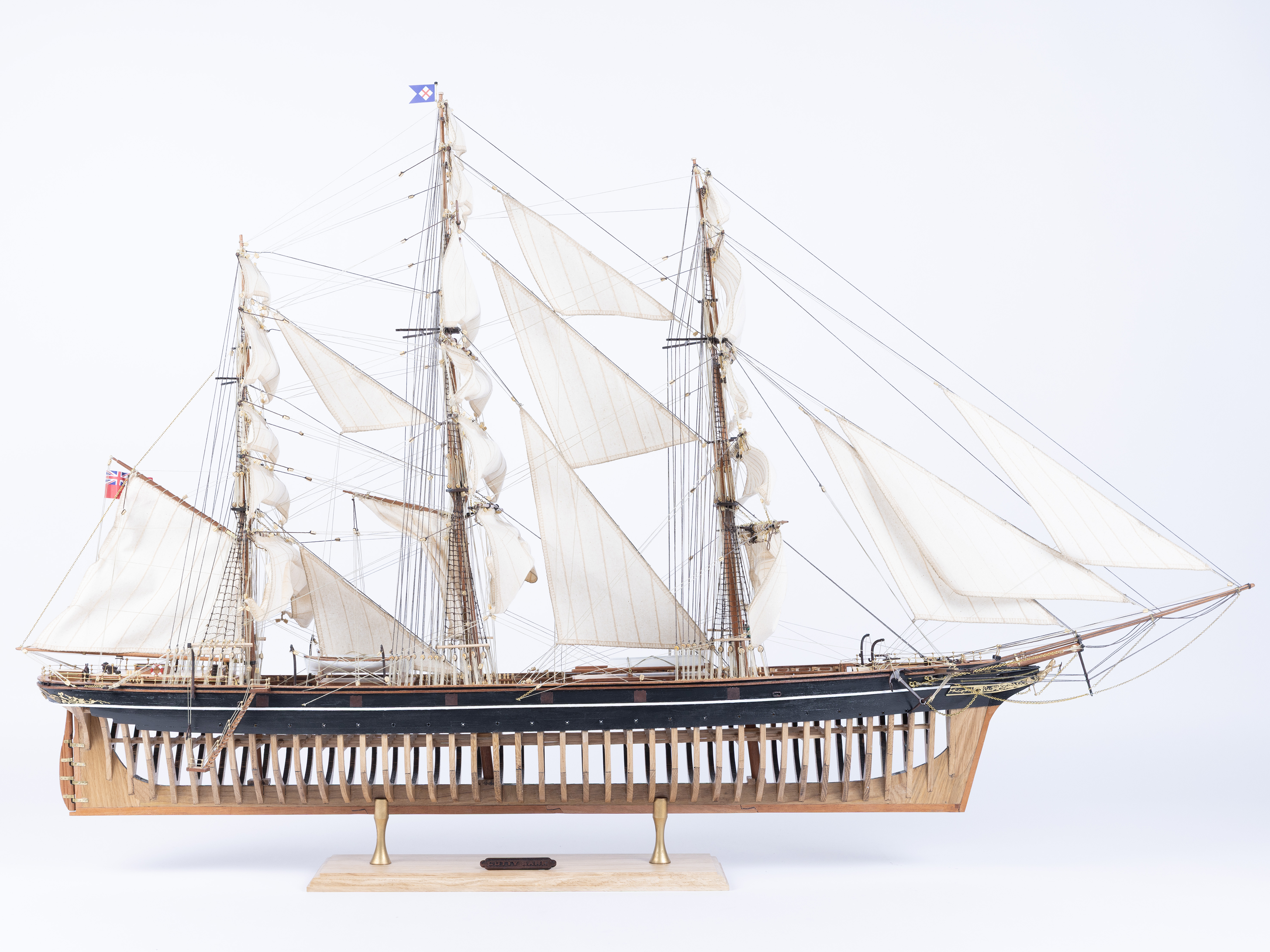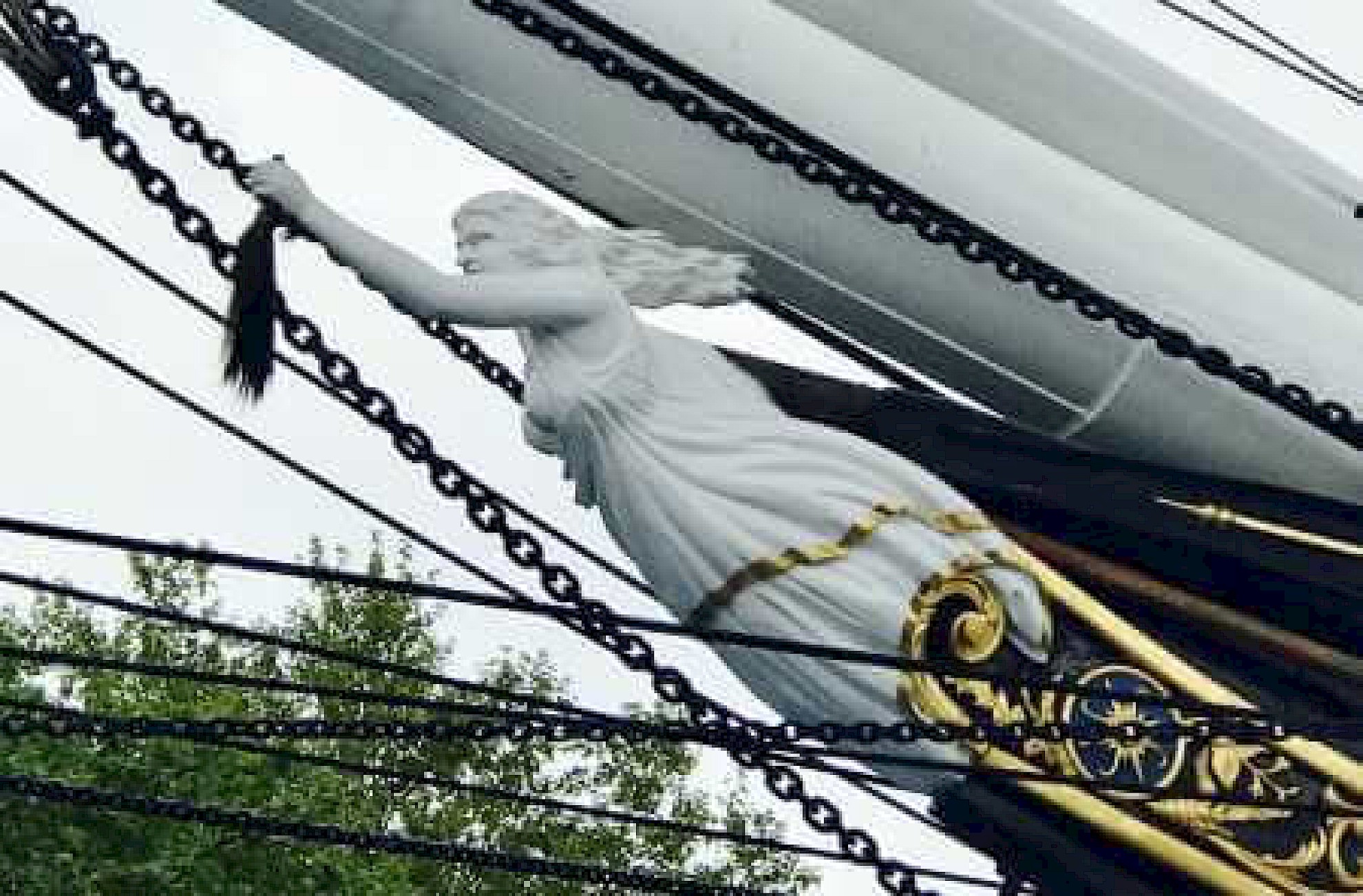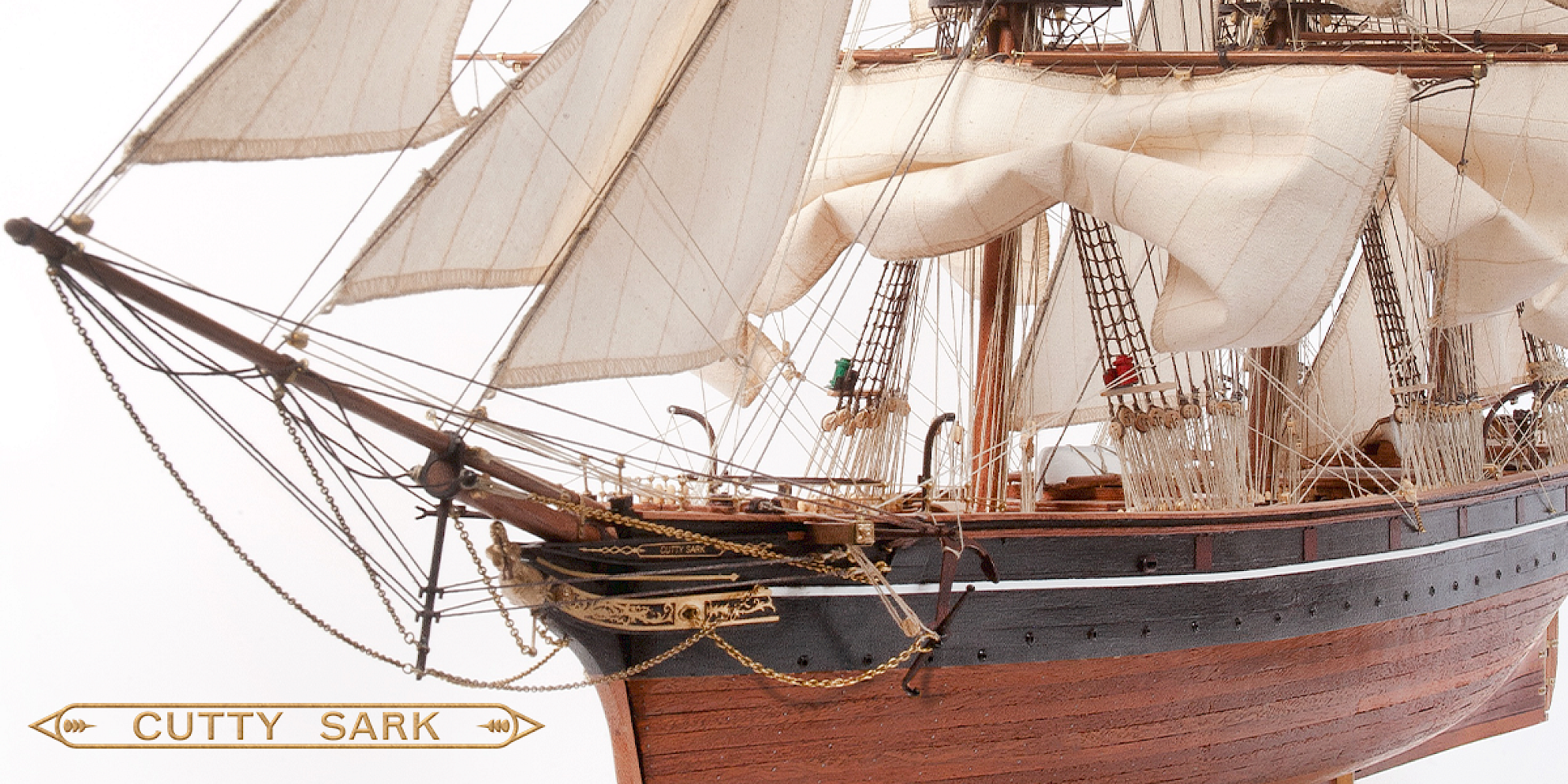
Cutty Sark
Coming March 2026
The Cutty Sark is one of the world’s most iconic sailing ships and a lasting symbol of Britain’s maritime heritage. Launched in 1869, she was built for speed at the height of the great tea races between China and London.
In her early years, she competed fiercely to bring the first tea of the season to Britain, later becoming a record-breaker on the wool trade routes from Australia. After a long and varied career, she was preserved as a museum ship and now stands proudly in Greenwich, London. A masterpiece of maritime engineering, she remains a tribute to traditional craftsmanship, and the adventurous spirit that defined 19th-century ocean trade.
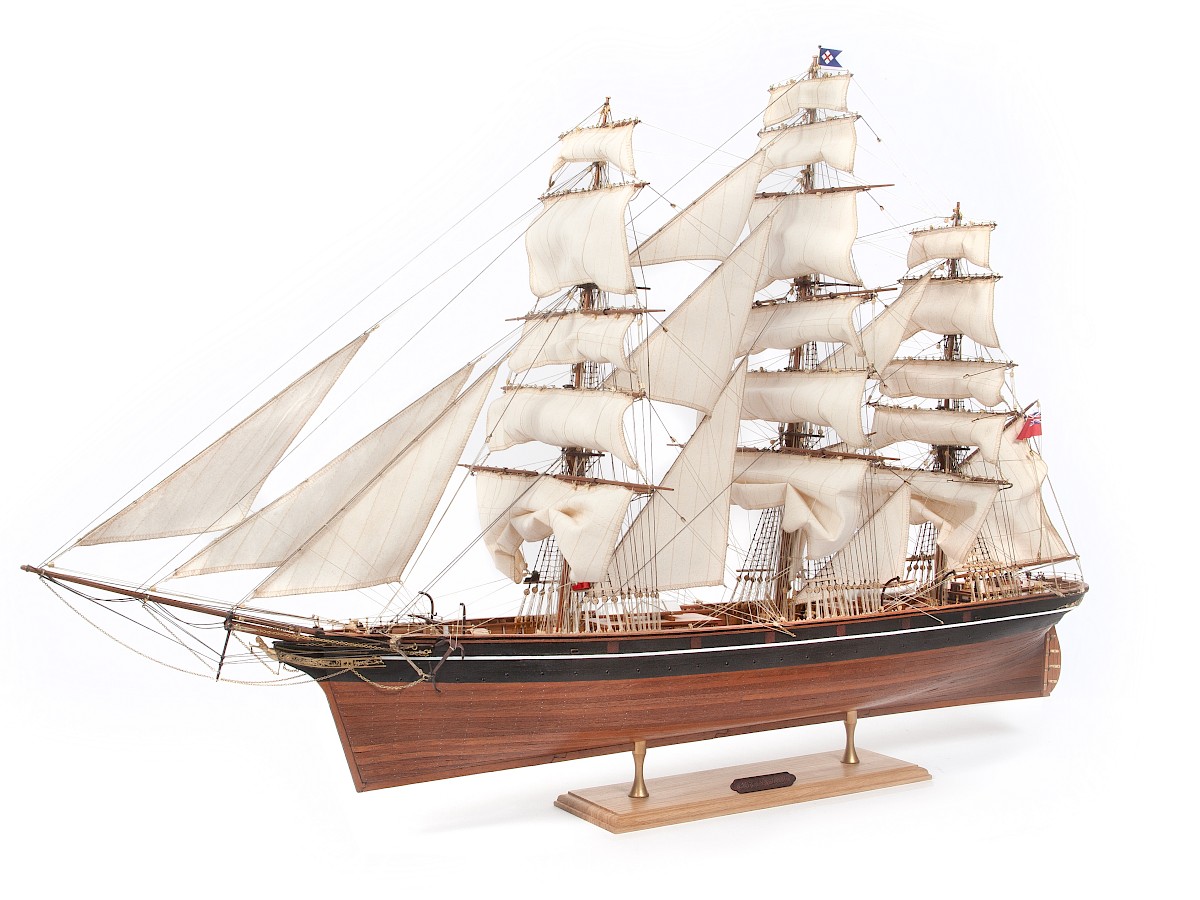
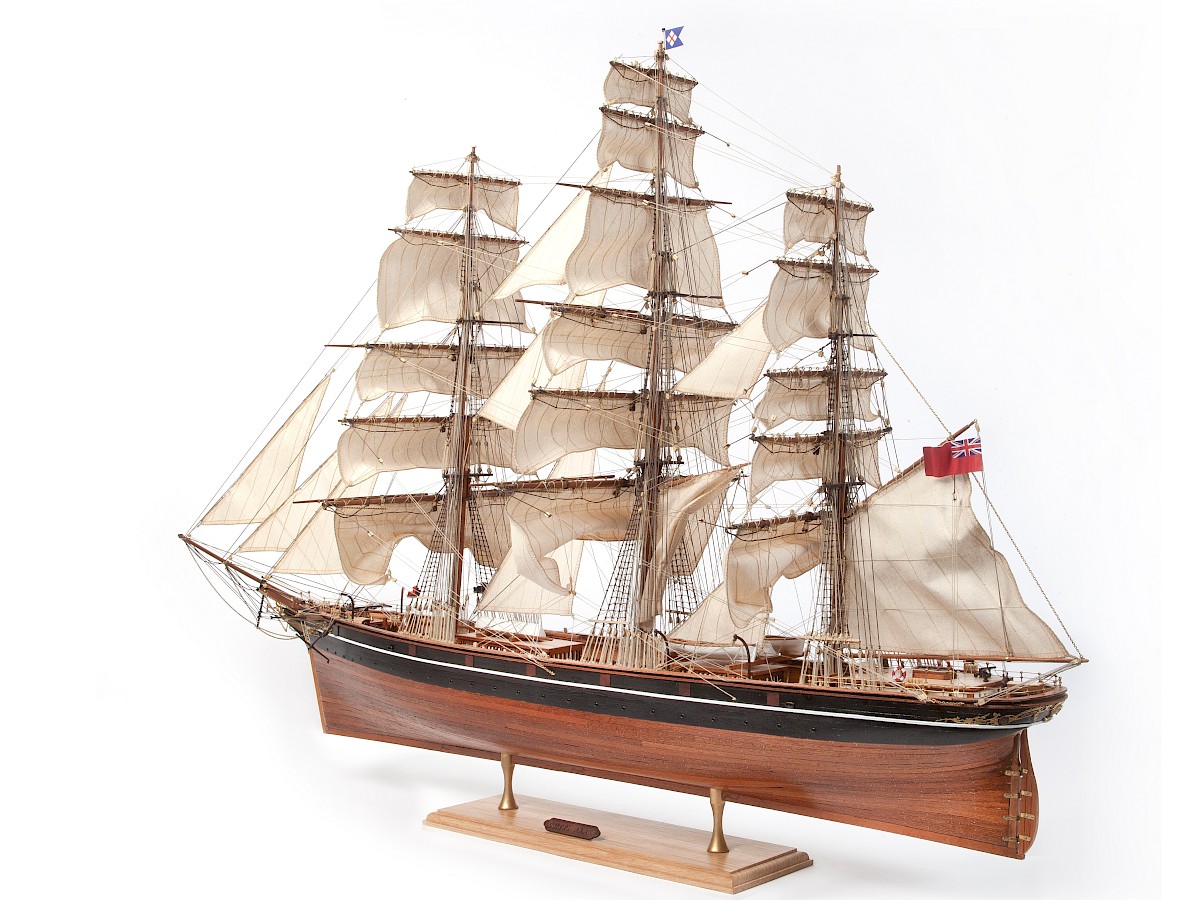


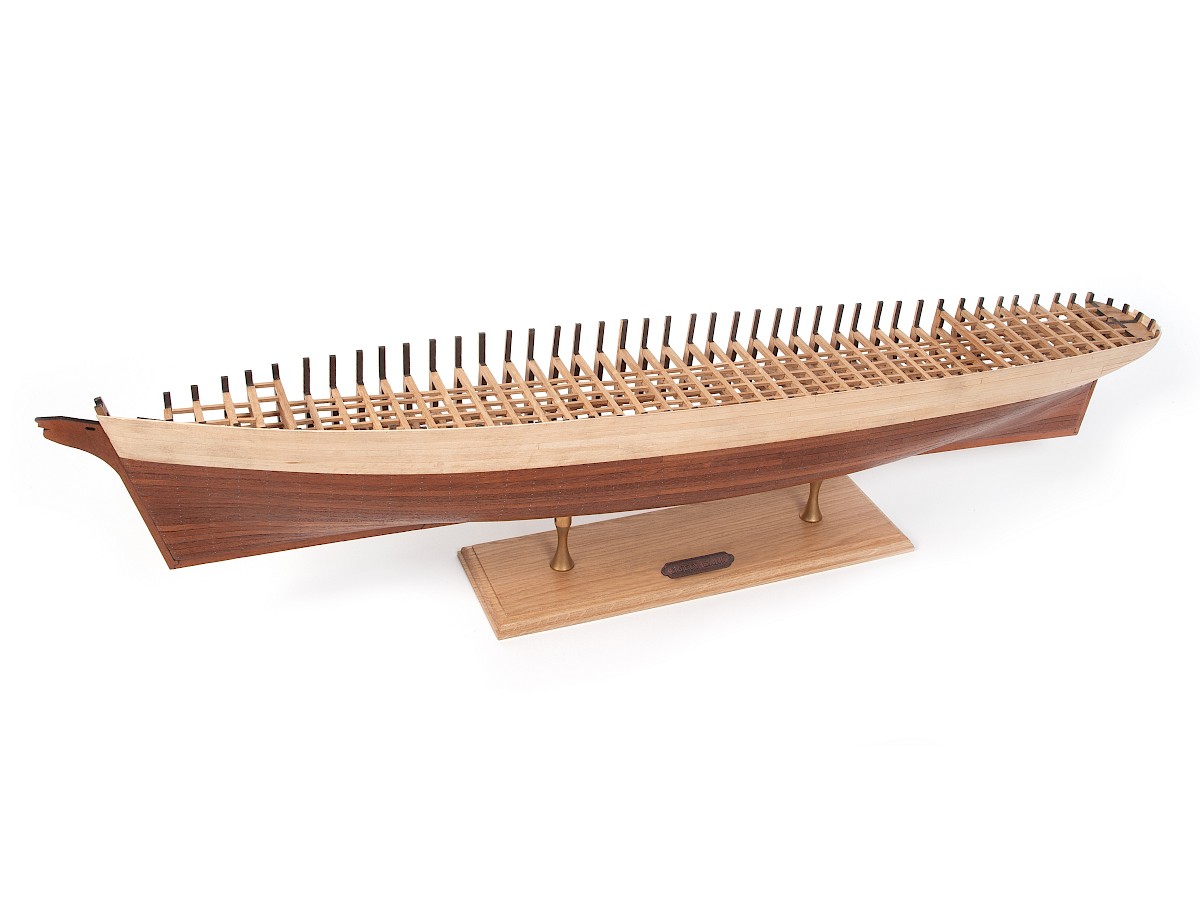

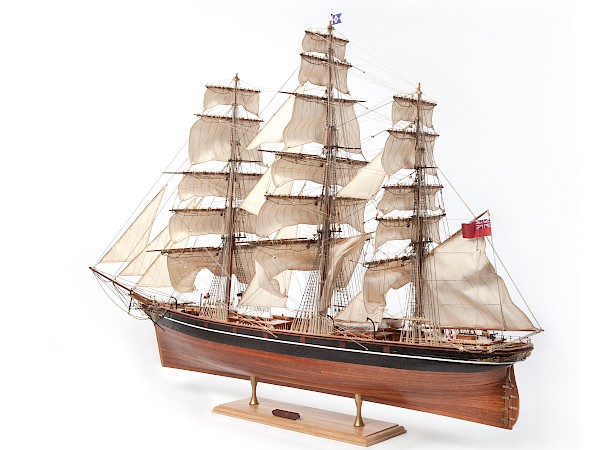



Specification & Features
Cutty Sark
This exceptional premium model has been meticulously developed over more than two years, employing the unique ‘Shipyard’ construction technique (also known as 'Arsenal'). This innovative approach faithfully recreates the traditional shipbuilding methods of historic vessels, delivering an unparalleled level of authenticity and realism. It’s one-of-a-kind craftsmanship that brings the past to life with remarkable detail and precision.
Utilizing new technology and innovation we can now create a museum-quality model kit that preserves the essence and charm of the ship that once sailed the seas.
Materials are of the highest quality and durability including woods such as mahogany, oak and lime, and decorations of photo-etched brass and zamak.
Crafted at 1:75 scale, this model has been created in the most extraordinary detail, with opened hand-sewn cotton sails, rigging from braided cotton threads of different thicknesses, plus a solid oak display stand.
The kit comes with measurement templates to facilitate precise construction, plus downloadable instructions with over 800 full-colour images to explain the construction process in detail.
Video guides to building the model will also be available.
Choose to completely plank the hull, or leave the ribs exposed

Specification
Scale: 1:75
Length: 1,155 mm (45 1/2”)
Width: 387 mm (15 1/4”)
Height: 685 mm (27”)
Number of parts: 7,500 approx.
Construction type: Shipyard (Arsenal)
Finish: Complete or exposed hull
Decoration: Bare wood or painted. Paint kit included.
Features
- Mahogany, oak and lime woods
- Hand-stitched cotton sails with bolt ropes
- Photo-etched brass, brass and zamak
- Accommodation ladder
- Solid oak display stand
- 1:1 scale templates
- Paints, varnish, and brushes
- Photographic build instructions
- Materials supplied allow a choice of planking on both sides of the hull or to be left exposed
Materials:
Wood used: Oak, Mahogany, Lime
- SOLID OAK - Internal hull structure
- SOLID MAHOGANY - superstructure, stern, keel, sternpost, and masts
- SOLID LIME WOOD - outer lining of the hull
- CASTING AND BRASS - bow and stern ornamentation, deck details
- COTTON - Sails meticulously hand-stitched with bolt ropes, dyed, and braided threads
It's all in the detail
Outstanding detail at 1:75 scale

Oak Frames
Constructed using oak frames following the shipyard technique.
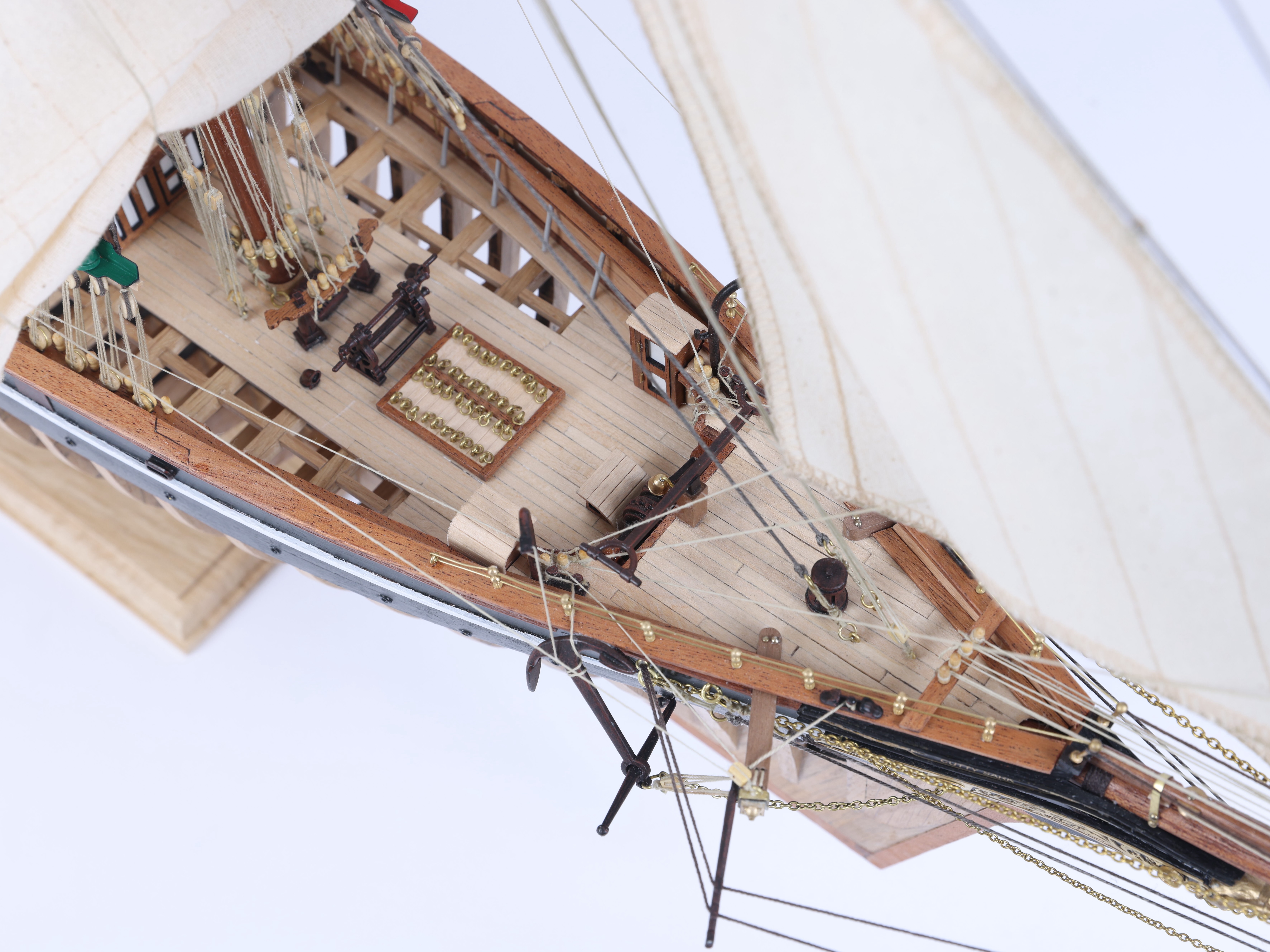
Deck Planking
Beautifully smooth and even lime wood (basswood) planking on the deck.
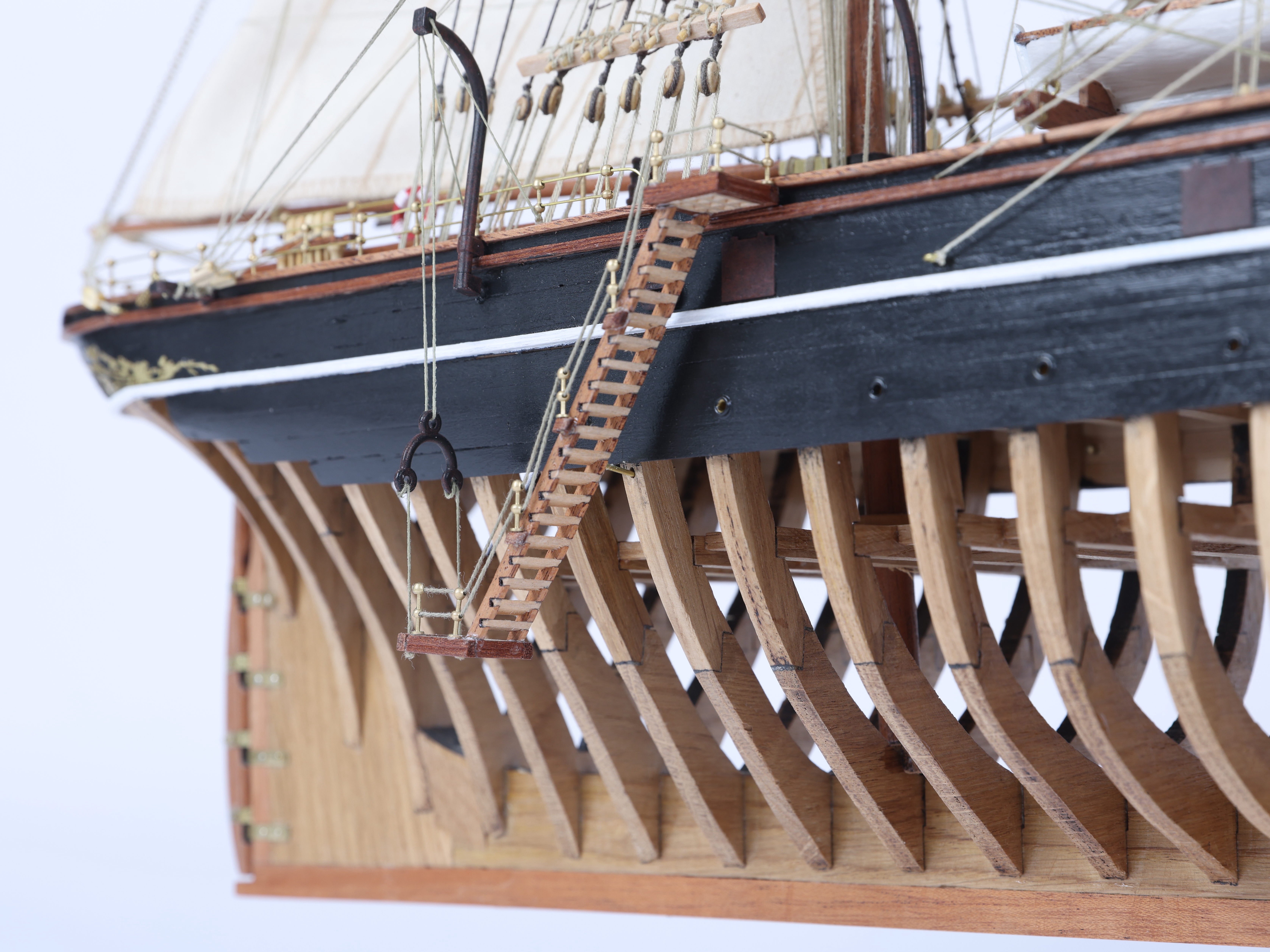
Ladder
Details include the all-important accomodation ladder.

Ornate Stern
Decorations in brass-plated metal with aged, brass-finished colouring.
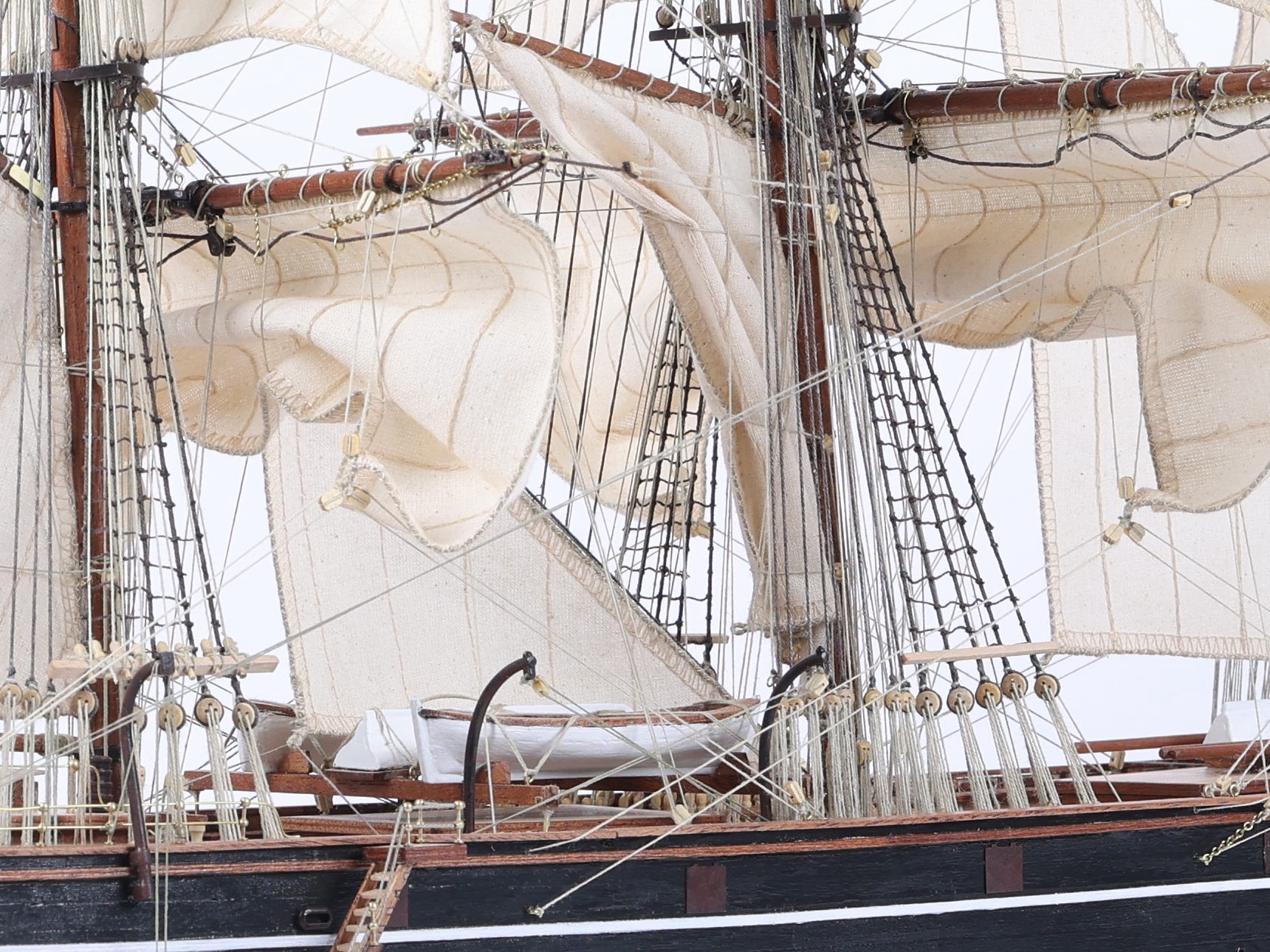
Sails & Rigging
Full cotton rigging kit, sails hand-sewn with bolt ropes, dyed, and braided threads.
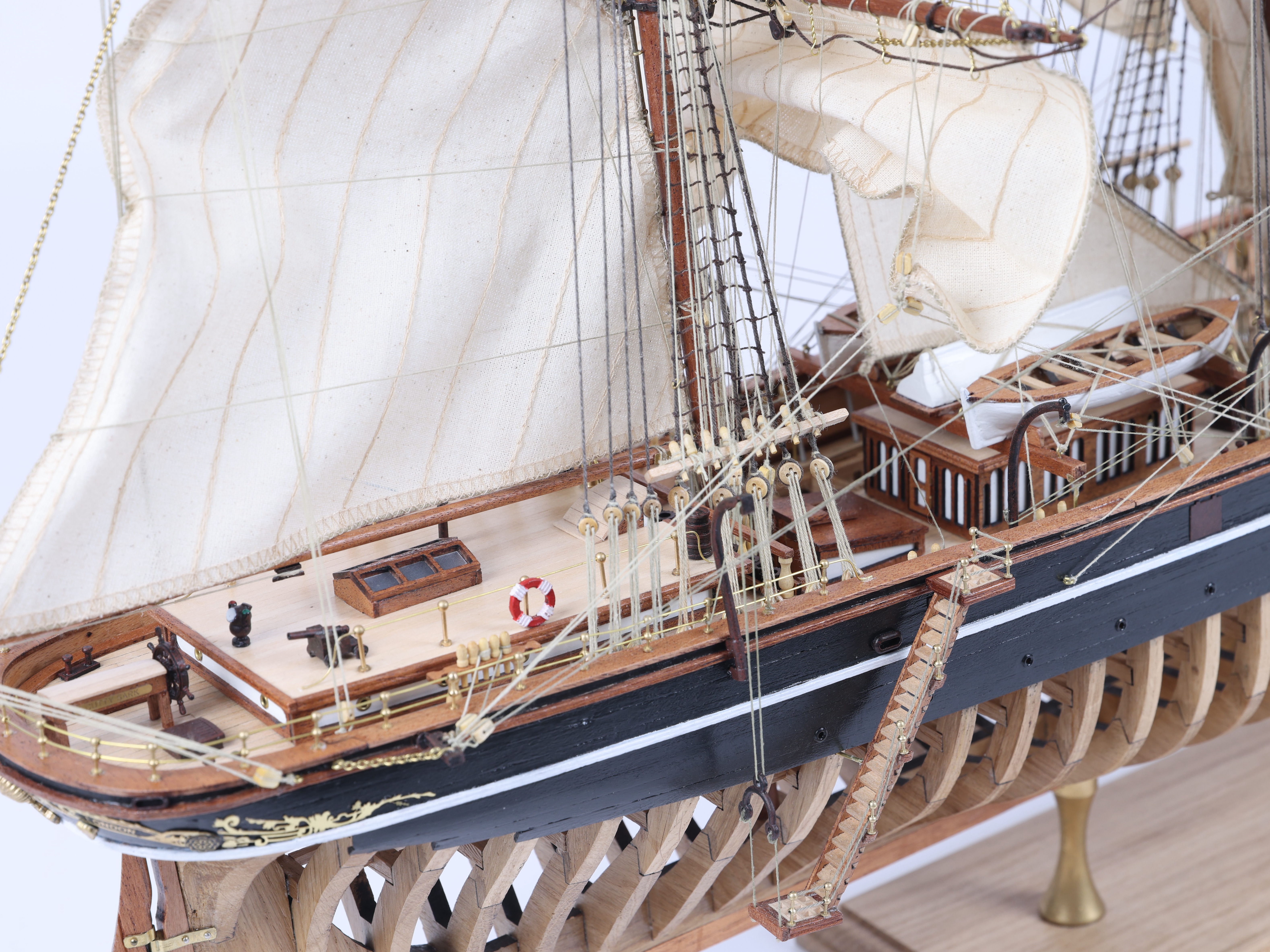
Deck Detail
Made from beautiful woods including mahogany, oak, and lime.
Video
Showcase Video
Your buying options
When you place your order we will send your first pack with the first stages of your kit to build your model. Following this, you will be sent another pack every month for 11 months. You will be charged monthly.
Alternatively, you may choose the 24-month plan click here for more details.
We deliver worldwide
Dispatching March 2026
The Agora Models ONE EXPRESS
For your convenience, we now offer the ability to purchase this model in one single payment. Make one payment now, and all monthly packs will automatically be dispatched as they become available. It makes the perfect Christmas gift!

PACK 1 ONLY {pricepack1}
then {price} per month

PACK 1 ONLY {pricepack1}
then {price} per month

One Payment: {priceaccelerator}
One-click subscription
Cutty Sark
History of Cutty Sark
November 22, 1869: launched in Dumbarton, Scotland.
1870: made her first voyage from London to Shanghai, returning with 1.3 million pounds (590,000 kg) of tea. Several successful tea voyages were made between China and London until 1877.
1878 – 1895: after the Suez Canal opened, steamships dominated the tea trade, so Cutty Sark began carrying wool from Australia to London, setting new speed records.
1895: sold to a Portuguese company and renamed Ferreira.
1922: Purchased by Captain Wilfried Dowman and restored to her original appearance, and used as a cadet training ship.
1938: Captain Dowman’s widow presents the ship to the Thames Nautical Training College.
1951: Moored in London for the Festival of Britain.
December 10, 1954: the tea clipper was floated into its purpose-built dock in Greenwich. After extensive restoration, the Cutty Sark was opened to the public by Queen Elizabeth II in 1957.
Technical Specification
Builder: Scott & Linton, Dumbarton, Scotland
Date of launch: 22nd November 1869
Built for: John Willis, Willis & Sons
Cost: £16,150
Function: Cargo Vessel (Clipper)
Gross tonnage: 963 tons
Net tonnage: 921 tons
Sail area: 32,000 sq. ft. (2,976 sq. m)
Number of sails: 32 sails
Rigging: 11 miles (17.7 km)
Hull length: 212.5 feet (64.8 m)
Extreme length: 280 feet (85.4 m)
Beam (width): 36 feet (11 m)
Registered depth: 21 feet (6.4 m)
Height of main mast: 152 feet (47 m)
Maximum recorded speed: 17 1/2 knots (20 mph, 32.5 kph)
Ship's flags:Cutty Sark flew signal flags representing the letters J K W S (depicting the name of the owner, JocK WilliS) and the Willis House flag – blue background with white diamond and red cross in the centre.
Crew: the number of crew changed for each voyage, but it was usually between 18 – 28 men.
Master: the ship's captain.
First Mate: took command of the ship when the Master was not on deck.
Second Mate: often the ship's navigator.
Third Mate: not all voyages carried a Third Mate, but he would have taken responsibility for the condition of the ship and organisation of the crew on deck, particularly when raising or lowering the anchors.
Steward: looked after the officers, serving their meals and maintaining their quarters.
Cook: a petty officer who cooked in the galley in the forward deckhouse.
Sailmaker: a petty officer responsible for mending torn sails and any other canvas work.
Carpenter: a petty officer responsible for the maintenance of the ship's hull, rudder, masts and yards, and for keeping the decks watertight.
Apprentices: young adults aged 14 to 21 training for a career in the Merchant Navy. They had to perform all the tasks undertaken by the crew.
Able Seamen: Men who had served on a ship for several years and held a certificate as proof of their competence in steering the ship and working aloft in the rigging and handling sails.
Ordinary Seamen: Men with little or no experience at sea. They carried out the more menial and unskilled tasks, such as cleaning and painting.
Cutty Sark's Figurehead 'Nannie'
In the 19th century, figureheads flourished on merchant ships and were considered to represent the spirit of the ship, bringing good luck and calming storms at sea.
Cutty Sark's original timber figurehead 'Nannie' was created by a legendary ship's carver Frederick Hellyer. Nannie is one of the most recognisable parts of Cutty Sark, her arm outstretched, pointing the way for sailors.
The name 'Nannie' comes from a poem by Robert Burns called Tam O'Shanter. In the poem, a farmer called Tam comes across a group of witches, including a beautiful witch named Nannie. Tam calls to the witches and they chase after him, then, just as his horse leaps to safety, Nannie grabs the horse's tail and pulls it off. This is why Cutty Sark's figurehead is holding a horse's tail.
The poem was also the inspiration for the name of the ship itself, Cutty Sark. Nannie is wearing a 'cutty sark' – an old Scottish term for a short nightdress.
Cutty Sark – built for speed
The Cutty Sark became a famous ship due to its immense speed. Its design was notable for its sleek lines and optimised sail plan, which reached the pinnacles of clipper ships and sailing technology before steamships made them obsolete.
Cutty Sark was well known for its swift voyages, including an 1885 journey from Sydney to London that took only 73 days.
Its construction featured a build of wooden planking over an iron frame – creating flexibility and strength. This combination allowed for a lighter, more durable hull that could reach much greater speeds than other designs.
| City | Votes |
|---|
You may also like...





